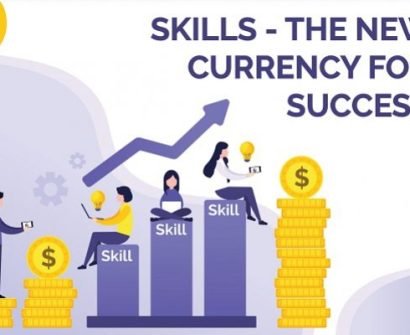Currently Empty: $0
How Business Leaders Should Weigh The Benefits Of Upskilling Their Workforce

When leaders can see a clear return on investment (ROI) for upskilling and reskilling, apart from just recruiting strategies for a competitive market, their commitment to learning and development (L&D) will become many orders of magnitude larger than what we’re seeing today.
Learning Trends
As upskilling and reskilling are increasingly part of the workplace conversation, business leaders need to approach these programs as far more than short-term campaigns with perks to attract employees in a tight labor market. Advancing employees’ skills should be viewed through the lens of their business objectives. When leaders can see a clear return on investment (ROI) for upskilling and reskilling, apart from just recruiting strategies for a competitive market, their commitment to learning and development (L&D) will become many orders of magnitude larger than what we’re seeing today.
Upskilling efforts are slowly gaining ground. Amazon said recently that it is expanding its upskilling for employees, with three additional programs that could open doors to jobs in data centers, IT, and user experience design. Nine existing upskilling programs that trained more than 70,000 employees since 2019, Amazon said. Other large employers, including Verizon, Bank of America, PwC, Accenture, JPMorgan, and AT&T, have launched upskilling initiatives over the past couple of years.
These programs, however, are a mere bump in the road compared to the mountain of L&D needed to accelerate the momentum across a fast-changing workplace. Business leaders should shift their focus beyond the short-term — and away from education offers that are tantamount to PR stunts to improve their social responsibility images.
Effective, meaningful L&D must be comprehensive, including not only technical abilities, but also imparting skills such as critical thinking, communication, collaboration, and creativity — all of which are increasingly important in the 21st century. But perhaps most important, training should support a growth mindset — “learning to learn” as a lifelong endeavor.
Learning to Learn
I witnessed a shift in thinking around learning many years ago when I was in medical school in Denmark and often went home on weekends for dinner with my parents, who were both educators. These were formative conversations for me, later influencing my career change into education. In one conversation, my father was explaining the pushback he had encountered as he traveled around Denmark, training teachers on a new learning management system—and now the country was changing again—to the third LMS in only a few years.
I asked him: “Dad, did you ever step back and try to understand your frustration? Your ability to learn this new system is different than the first two systems—which may change two more times before you retire.” My comment hit my father like cold water in the face, but in a good way. He began to shift training from learning something specific to embracing the concept of meta-skills and the ability to learn more efficiently.
In the same way, business leaders need to move beyond training to teach people about the “buttons” in their latest software or steps in a new business process. Instead, they should approach it as a way to promote a mindset among workers to welcome new challenges and opportunities to learn.
Weighing the Costs
As business leaders weigh their commitment to upskilling and reskilling, it must be acknowledged that devoting more resources to L&D carries a cost. Some industry figures suggest about $1,100 per employee, but that number might need to be significantly higher in the future. Still, it may be much cheaper than lost productivity that results from not having enough workers with necessary skills and increased turnover because employees burn out when they must make up for unfilled vacancies. These costs are measured in missed sales opportunities, errors, and low morale. Given the choice of the two, the cost of workplace education is preferable because it pays long-term dividends with a higher-skilled, technology-enabled workforce.
Source: GWFM Research
Subscribe as a member: https://globalwfm.com/become-gwfm-member/
Visit us for WFM Learning Academy: https://gwfmlearning.online/courses/







